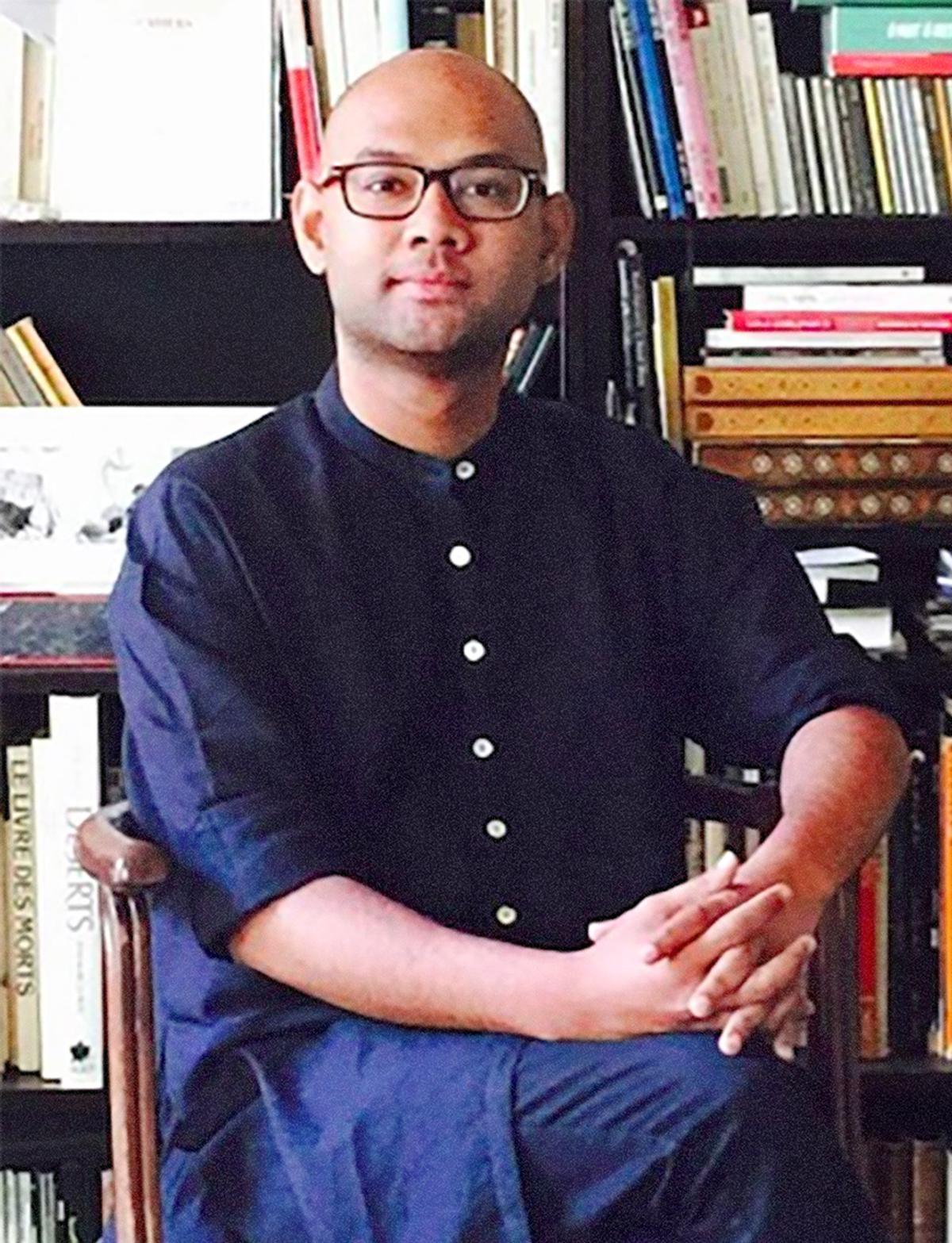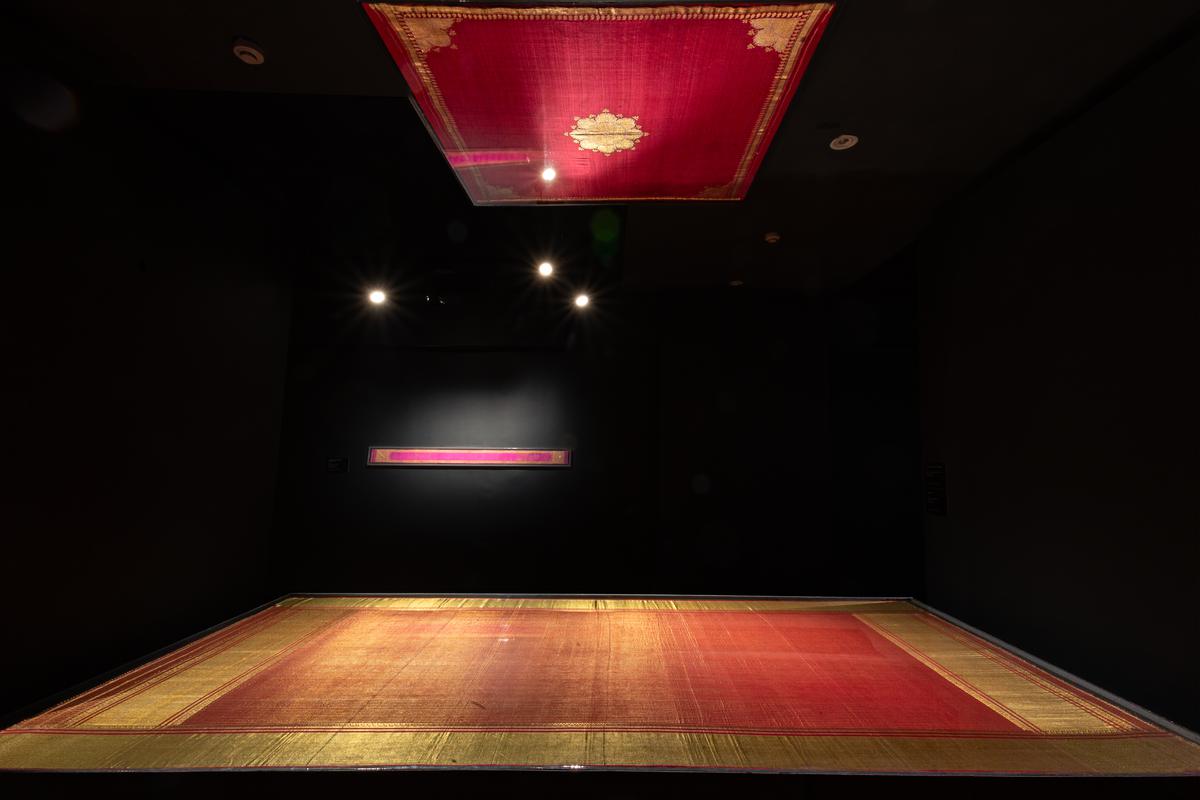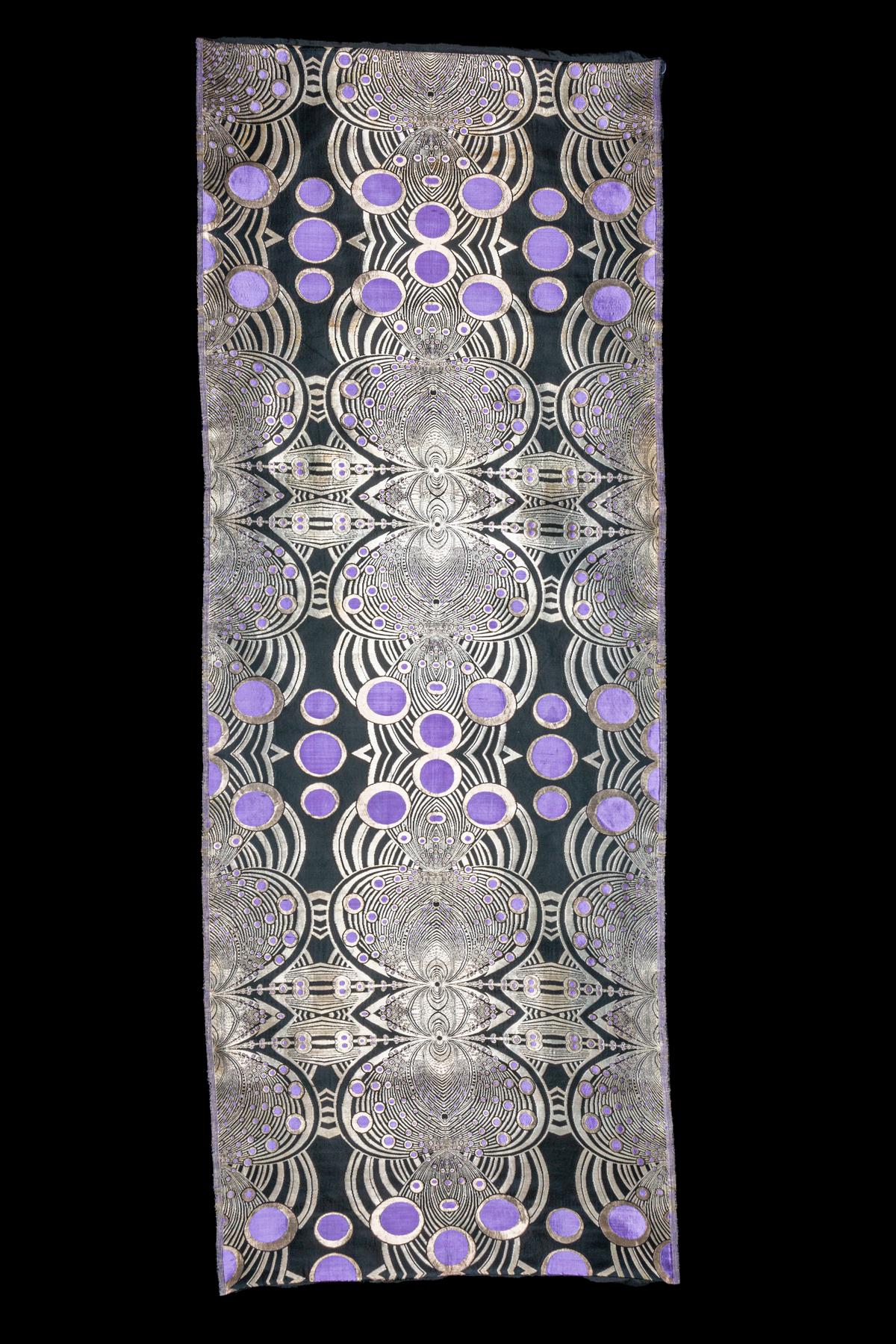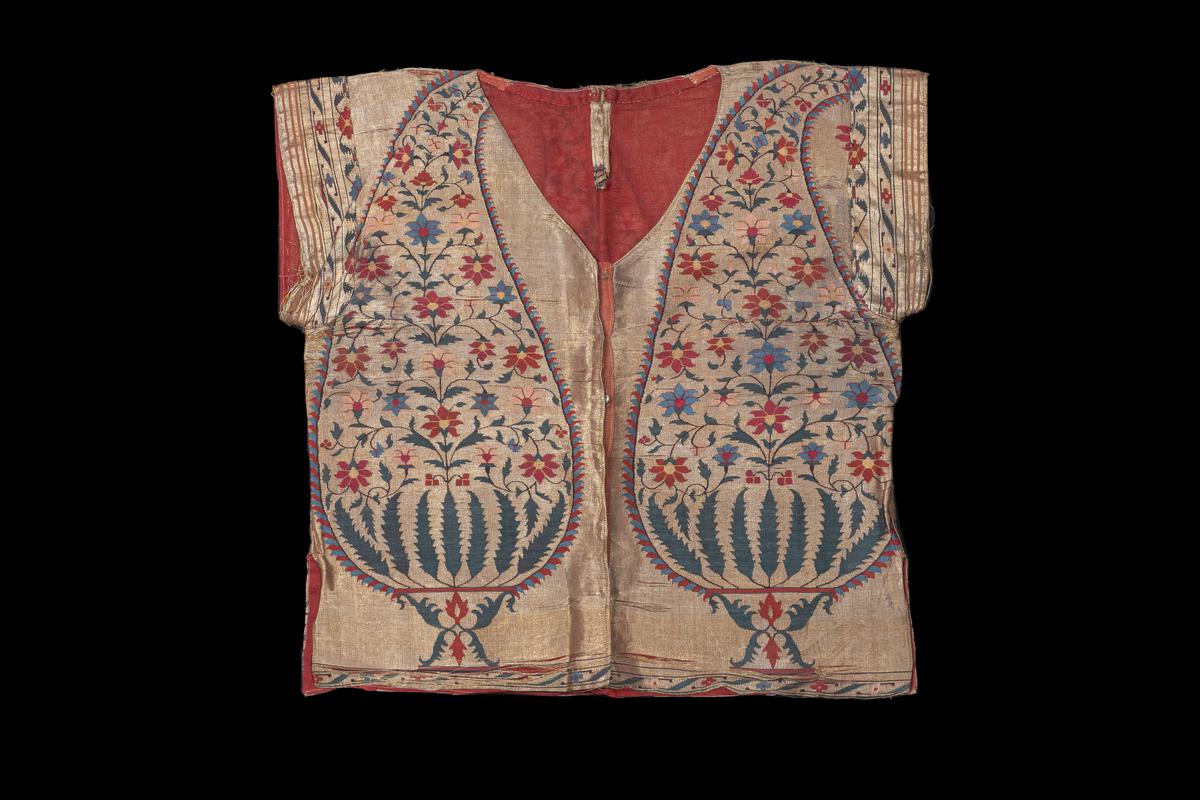New Delhi | Textile exhibition Vayan – The Art of Indian Brocades delves into the history of the decorative weave
The 17th century English explorer Edward Terry wrote of his visit to India: “The natives there show very much ingenuity in their curious manufactures, as in their silk stuffs, which they most artificially weave, some very neatly mingled either with silver or gold or both…”
It is these glowing, glistening, lustrous “silk stuffs” that are the subject of a dazzling exhibition at the National Crafts Museum & Hastkala Academy in New Delhi, this month. Vayan – The Art of Indian Brocades is the second in a series of small but significant textile exhibitions, curated by Mayank Mansingh Kaul for the Devi Foundation, in collaboration with the National Crafts Museum. Representing a period broadly from the 19th century to the present, the exhibits are drawn from both their collections.

Mayank Mansingh Kaul
Entering the exhibition, your eyes adjust to a dark black void from which gradually emerge luminous patches of radiant colour. Each of the six sections highlights different weaving styles from all over the country linked by common visual, aesthetic and technical attributes — Banaras, of course, and Kanjeevaram, but also textiles from Gujarat, Maharashtra, and Central India.
Many of the pieces are saris or odhnis with ornate decorative pallavs and strong, deep colours — red, magenta, orange — and broad, patterned gold-edged borders. Stylised paisleys, both as end pieces and as ornamental konia corners, are a recurring feature, as are trailing floral arabesques and stylised roses and poppies. Included are brocades using complex hand-weaving techniques, such as luxurious samites, lampas and velvets, as well as lighter chanderis and tissues, and the now extinct gethwa technique of Varanasi. Ingeniously designed by Reha Sodhi, one of the delights of this exhibition is that, despite the relatively small space, each exhibit can be seen in isolation, and therefore has its own dramatic impact.
I was delighted to see a celebration of my favourite, but less known, Paithani and Asavalli saris: their dull golds, tawny pinks, mulberrys and olive greens so subtle both in colour and patterning. The exhibition features a few striking contemporary pieces with more abstract, bolder designs, such as a pop art-inspired gyaser, showing the range and versatility of the medium.

Exhibition view of Vayan – The Art of Indian Brocades
| Photo Credit:
Devi Art Foundation
Enjoy the ‘little dream’
The name ‘Vayan’ is from Hindi, referring to the art of weaving. Known in India from ancient times, brocade was called hiranya or cloth of gold in Vedic literature, while in Gupta times it was known as puspapata, or cloth with woven flowers. Kimkhab is another word, derived from the Persian, still often used for Indian brocade. It has a poetic dual meaning — “a little dream” and “woven flower” — both evocative of its intricate, dreamlike, often floral, patterns.

Silk and zari yardage designed by Manish Arora, and woven by Hashim Mohammad in Varanasi (2007)
| Photo Credit:
Devi Art Foundation
These extraordinary Indian brocades, woven with silk and gold or silver thread, are characterised by their raised floral or figured motifs and designs, introduced during weaving through the extra warp process. This was traditionally done by a nimble fingered young boy, till Joseph Marie Jacquard’s loom and punchcards replaced him in the early 19th century. In India though, the older methods continued alongside much longer.
Textile techniques came to us from all over the world, to be transformed by India’s eclectic magic into our own distinctive indigenous traditions. Silk originally came to India from China; Chinese rulers forbade the export of silkworms, but they were smuggled in (so the story goes) by Chinese Buddhist monks in the hollow shafts of their canes. India is now the world’s second biggest silk producer, though China still leads the way.

A silk and zari blouse from the 19th century, with a complementary plain weave
| Photo Credit:
Devi Art Foundation
There are 21st century echoes of this ancient rivalry. Currently, guardians of India’s craft traditions are up in arms at the Chinese usurping many of our traditional skills. There was an outcry at South Indian silk weavers being taken to China to teach Chinese weavers how to weave Kanjeevaram saris, and India is flooded with shiny, inferior but cheaper Chinese silk yarn while we neglect our own mulberry silk cultivation.
Drama beyond the weaves
Each piece in Vayan demonstrates the different facets of brocade. It can be crisp and metallically shiny, or soft and flowing with a soft luminous sheen, extraordinarily sensuous. The encyclopaedic explanation for the attributes of silk — “The shimmering appearance for which it is prized comes from the fibre’s triangular prism-like structure, which allows silk cloth to refract incoming light at different angles” — doesn’t at all convey its allure.
At the exhibition, a glass case with a bolt of brocade tissue scrunched into soft, iridescent folds, beautifully illustrates that magic, just as a three-dimensional installation (by artist Astha Butail in collaboration with Raw Mango) at the midway point of the exhibition illustrates its drama.
7 Yokings of the Felicity installation — artist Astha Butail in collaboration with Raw Mango
| Photo Credit:
Anuj Arora
The skills that wove these textiles are very much alive; nor are the exhibits rare archival items. As I walked around, murmured voices mentioned a similar piece in a wedding trousseau, or inherited from a grandmother. So, just as brocaded silks delicately flow and shimmer and yet have a tensile strength, Vayan, too, is not just a decorative window to a lost cultural and aesthetic past; it is a doorway that could open to exciting new design futures in both fashion and craft.
On view at the National Crafts Museum & Hastkala Academy, New Delhi, till February 19.
The writer is chairperson-founder member of Dastkar, Society for Crafts & Craftspeople.
For all the latest Life Style News Click Here
For the latest news and updates, follow us on Google News.
